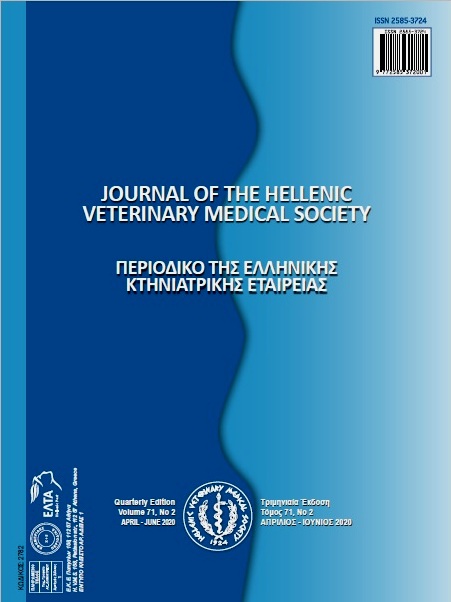Correlation between ESβL Salmonella Serovars Isolated from Broilers and their Virulence Genes
Abstract
Salmonella is considered to be one of the major poultry bacterial pathogens. The poultry species are one of the main reservoirs for the human types, thus serving as public health hazards. The development of drug resistant genes and multidrug resistant types from Salmonella has increased recently. This current study was undertaken to estimate the correlation between extended spectrum beta-lactamase multidrug resistant (ESβL) Salmonella serovars isolated from broilers and their virulence genes. Two hundred and forty samples were collected from clinically diseased broilers chicks (showed disorders of the intestinal tract) and examined for the presence of Salmonella isolates according to ISO 6579: 2002 and ISO. 6579-3:2014 Fifty Salmonella isolates were isolated with an incidence of 20.8%. Isolates of Salmonella were serotyped as follows: 25 S. Kentucky, 9 S. Infantis, 6 S. Enteritidis, 4 S. Heidelberg, and one isolates per serovars S. Labadie, S. Typhi, S. Agona, S. Pullorum, S. Newport and S. Virginia. AST (antimicrobial susceptibility testing) showed that high percentage of isolates were resistant to all Ampicillin (90%), Nalidixic acid (88%), Sulfamethoxazole + Trimethoprim (82%) and Tetracycline (82%). Approximately 86% of the isolates demonstrated multiple resistance, of which 18.75% and 25% were resistant to three and four antimicrobial types, respectively. Phenotypic detection of ESβLs by using screening test (Cefinase®) and confirmatory test by using combined disk diffusion test revealed that 32% of isolates were positive for both tests with 20% similarity and 12% diversity between the two tests. Molecular characterization of some ESβLs genes (blaTEM, blaCTX, blaOXA, blaCMY and blaSHV) and some virulence genes (invA, avrA, sopB, bcfC, stn (was done using PCR. The results showed that all the ESβLs positive serovars were positive for amplification of all tested virulence genes and noticed that all the isolates were negativefor blaCMY gene. The present study suggests that virulent ESβL Salmonella serovars could infect broilers and should be taken into consideration as an important bacterial pathogen affecting poultry.
Article Details
- How to Cite
-
RADY, M., EZZ-EL-DIN, N., MOHAMED, K., NASEF, S., SAMIR, A., & ELFEIL, W. (2020). Correlation between ESβL Salmonella Serovars Isolated from Broilers and their Virulence Genes. Journal of the Hellenic Veterinary Medical Society, 71(2), 2163–2170. https://doi.org/10.12681/jhvms.23645
- Issue
- Vol. 71 No. 2 (2020)
- Section
- Research Articles

This work is licensed under a Creative Commons Attribution-NonCommercial 4.0 International License.
Authors who publish with this journal agree to the following terms:
· Authors retain copyright and grant the journal right of first publication with the work simultaneously licensed under a Creative Commons Attribution Non-Commercial License that allows others to share the work with an acknowledgement of the work's authorship and initial publication in this journal.
· Authors are able to enter into separate, additional contractual arrangements for the non-exclusive distribution of the journal's published version of the work (e.g. post it to an institutional repository or publish it in a book), with an acknowledgement of its initial publication in this journal.
· Authors are permitted and encouraged to post their work online (preferably in institutional repositories or on their website) prior to and during the submission process, as it can lead to productive exchanges, as well as earlier and greater citation of published work.



